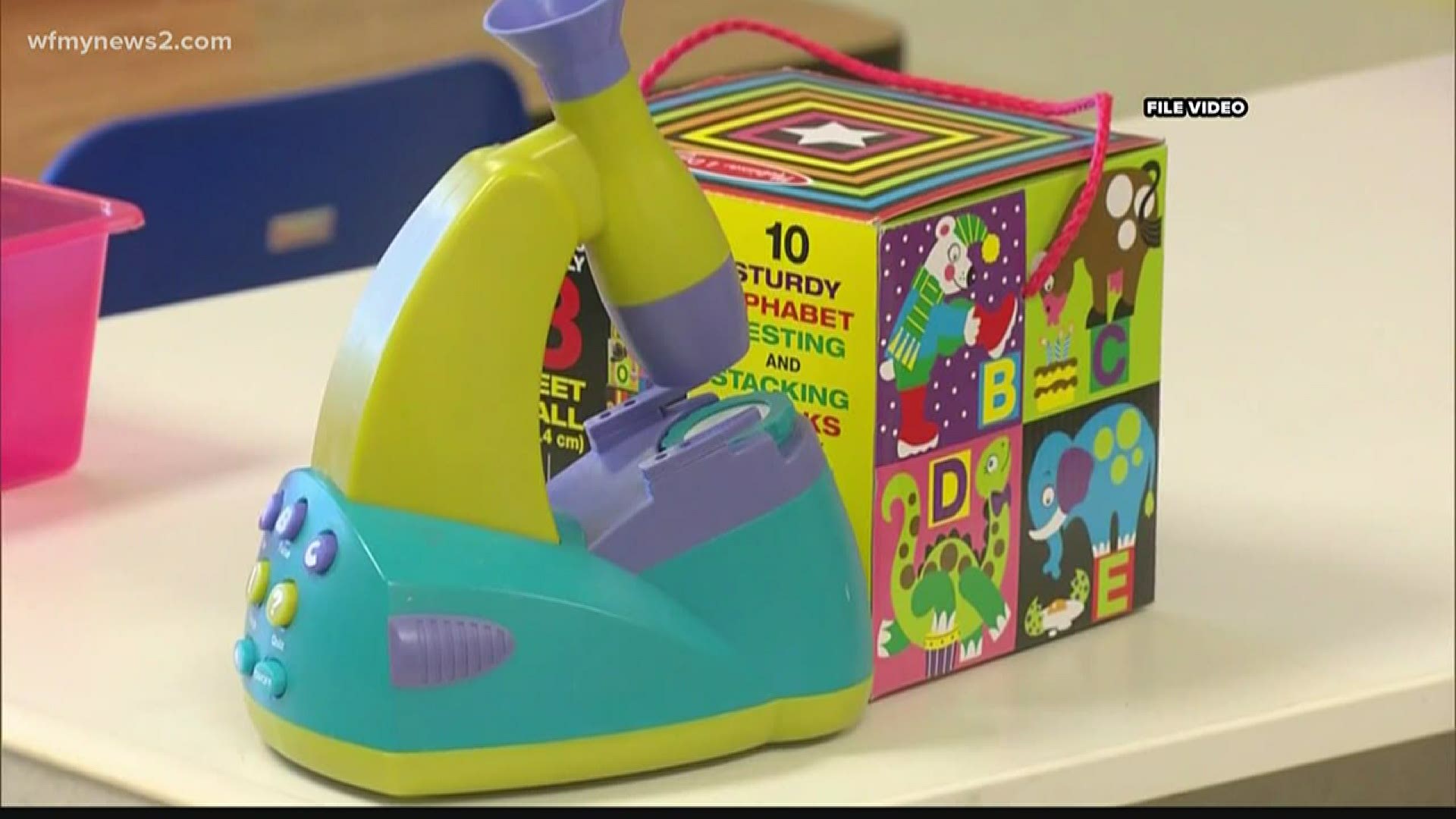GREENSBORO, N.C. — North Carolina has one of the highest rates of working mothers with young children, making the need for child care one of the state's top priorities. According to the North Carolina Department of Health and Human Services, more than 200,000 children spend part or all of their day in a child care program. Statistics also show there are more than 6,000 regulated child care facilities in North Carolina.
Under Phase One of the state's reopening plan, child care centers can reopen for people who are working, seeking employment, homeless, or receiving child welfare services. But, before reopening, child care facilities must be approved by the Division of Child Development and Early Education of the State Health Department.
The process involves completing a reopening application to demonstrate compliance to the new emergency child care licensing regulations and updated health and safety guidelines. Some of the new measures include:
Drop-off/Arrival procedure:
- Before arrival: Ask parents to be on the alert for any symptoms of COVID-19 and to keep the child(ren) home if showing any signs of illness.
- Consider staggering arrival and drop off times and/or plan to limit direct contact with parents as much as possible.
- Have a staff member greet children outside as they arrive.
- Designate a staff person to walk children to their classroom, and at the end of the day, walk them back to their cars. Walk with older children and transport infants in an infant carrier.
- The staff person greeting children should not be a person at higher risk for severe illness from COVID-19.
- Staff should monitor and discourage congregation at arrival and drop-off.
- If possible, the same parent or designated person should drop off and pick up the child every day. Avoid designating those considered at high risk such as elderly grandparents who are over 65 years of age.
- Hand hygiene stations should be set up at the entrance of the facility, so that staff and children can clean their hands before they enter. If a sink with soap and water is not available, provide hand sanitizer with at least 60 percent alcohol. Keep hand sanitizer out of children's reach and supervise use.
Prevent virus that causes COVID-19 from entering the building:
- Post this door sign at all entrances to the facility.
- Only allow children and staff who are required for daily operations and ratio inside the building and classrooms.
- Restrict teachers to one classroom with one group of children. To reduce the number of people coming in and out of classrooms, limit the use of "floater" teachers to one per classroom to provide coverage for staff at meal time and breaks.
- Conduct a daily health screening on all individuals who are entering the building. This screening will exclude individuals who are in any one of these four categories:
- Person is showing any of the symptoms of COVID-19
- Person thinks they could have COVID-19
- Person has tested positive for COVID-19
- Person is awaiting the results of testing for COVID-19
- Exclude children and staff who share a home (including siblings) or who have been in close contact with anyone in the four categories above.
- Support staff to stay at home as appropriate with flexible sick leave and paid leave policies
Sanitation and hygiene practices:
- Follow NCDHHS Environmental Health Section guidance for cleaning and disinfection recommendations.
- Use an EPA-registered disinfectant that is active against coronaviruses. Clean and disinfect frequently touched surfaces throughout the day and at night. Remember items that might not ordinarily be cleaned daily such as doorknobs, light switches, countertops, chairs, cubbies, and playground structures. Use the cleaners typically used at your facility.
- Clean and sanitize all toys at the end of the day.
- Consider removing soft toys that cannot be easily cleaned during the coronavirus outbreak. Soft toys that are machine-washable should be washed often at the warmest temperature recommended on the label and dried thoroughly.
- Toys and other items that cannot be cleaned and sanitized/disinfected should not be used. (Children's books are not considered a high risk for transmission and do not need additional cleaning or disinfection)
- Wash linen items daily using the warmest appropriate water setting for the items and dry items completely. Clean and disinfect hampers or other carts for transporting laundry according to guidance above for hard or soft surfaces.
- Clean and disinfect shared tools, supplies, and equipment.
- Allow time for cleaning between activities.
- Minimize use of shared supplies and label individual supplies and items.
- Routinely check and refill/replace hand sanitizer at entries, soap, and paper towels in bathrooms.
Screen children and staff by:
- Making a visual inspection of the person for signs of infection such as flushed cheeks, fatigue, or extreme fussiness.
- Choosing to conduct temperature screening using the protocol below.
- Recording temperature and/or any symptoms on daily health screening log.
- Health screenings should be repeated periodically throughout the day on staff and children to check for new symptoms developing

